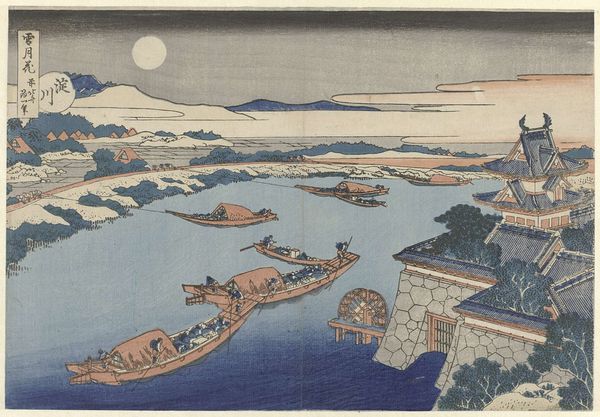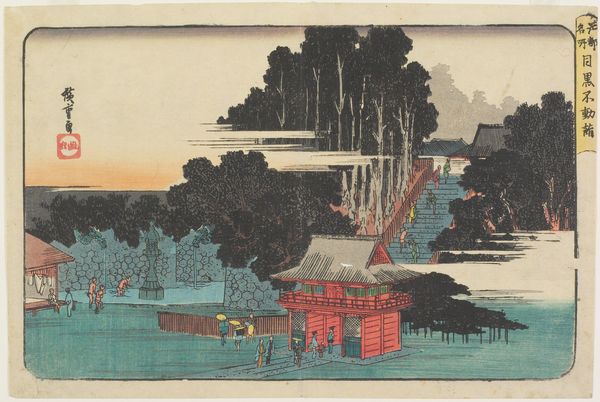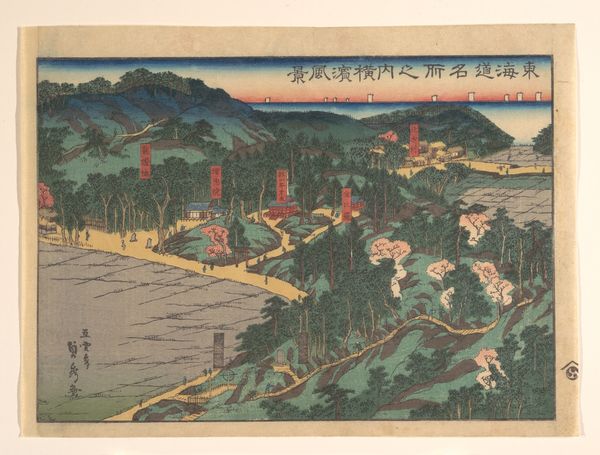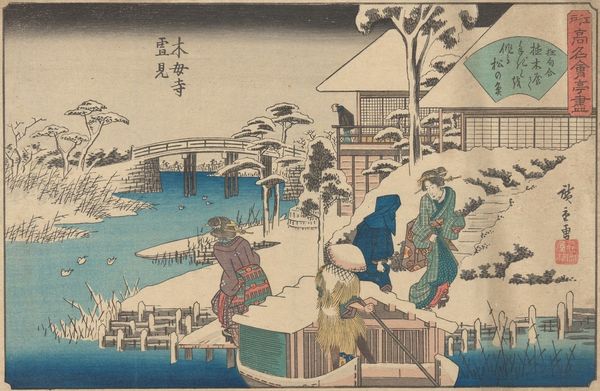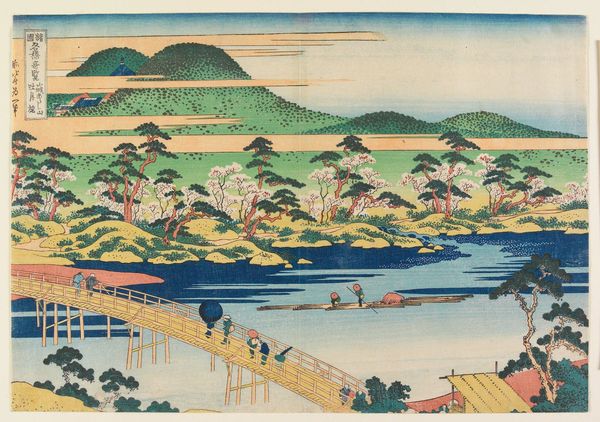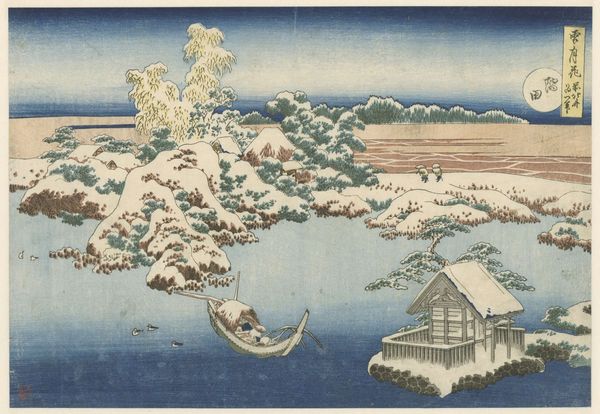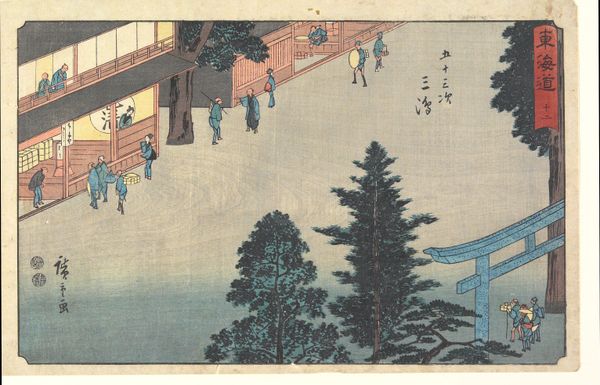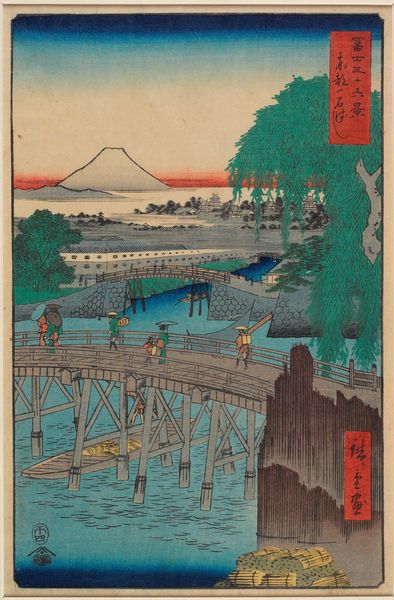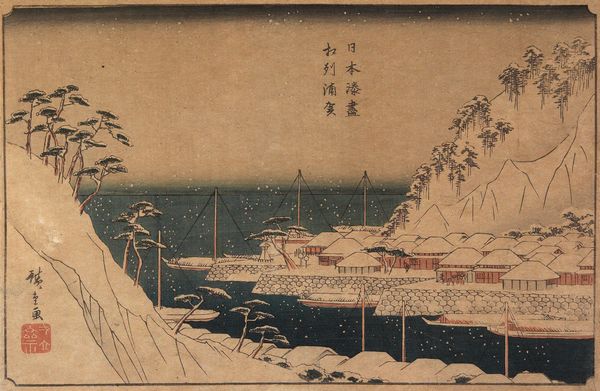
painting, paper, watercolor, woodblock-print
#
water colours
#
painting
#
asian-art
#
landscape
#
ukiyo-e
#
figuration
#
paper
#
watercolor
#
coloured pencil
#
woodblock-print
Dimensions: height 262 mm, width 384 mm
Copyright: Rijks Museum: Open Domain
Editor: Here we have Hokusai’s "Zigzag Bridge in Mikawa Province," created sometime between 1830 and 1834, a woodblock print now housed in the Rijksmuseum. I find the composition so intriguing – it almost feels like a geometric puzzle nestled in a landscape. What stands out to you most about the formal elements at play? Curator: The most compelling aspect, structurally, is the play with perspective and line. Notice how the zigzag bridge dominates the foreground, its angularity sharply contrasting with the more fluid, organic shapes of the landscape behind it. This juxtaposition creates a dynamic tension, wouldn't you agree? Editor: Yes, the hard lines against the soft backdrop. It makes me wonder about the spatial relationships. Curator: Precisely. The artist uses a flattened perspective, common in Ukiyo-e, to compress the scene, bringing the background closer and disrupting traditional depth cues. Note, as well, the recurring motif of the rectangle and how it defines most of the elements—the bridge segments, the paddies, and even the chop mark containing the characters, don't you think? Editor: Now that you point it out, it's impossible to miss! The rectangles are really rhythmic. The colours are also very subtle - are there particular colour combinations that stand out to you? Curator: Observe how the muted blues of the water and sky bookend the earthy tones of the bridge and landscape. This restricted palette creates a sense of harmony while also directing our gaze to the intricate details of the bridge. Did you notice how certain blocks have grain more evident than others? That contrast is purposeful and draws one's attention further. Editor: That's a great catch; I was so focused on the composition I almost missed that texture detail. Curator: And it's through noticing details like that, the relationships, textures and forms, we come to understand more fully the complex, internal language of Hokusai’s work. Editor: I’m beginning to see this print in a whole new light - understanding the significance of the formal decisions, such as flattened perspective and colour harmonies, changes the entire viewing experience. Curator: Agreed. Approaching art from this angle makes its own interesting landscape—one of shapes and lines, negative spaces and volumes, tones, forms and structures, and one that is always rewarding to consider and discover.
Comments
No comments
Be the first to comment and join the conversation on the ultimate creative platform.

